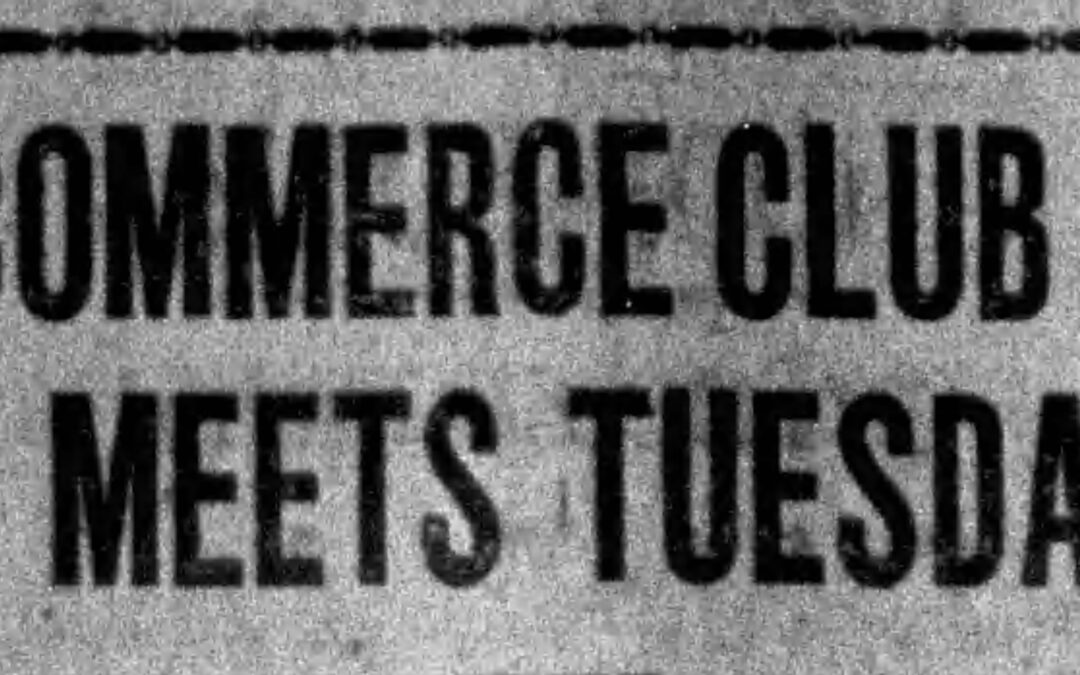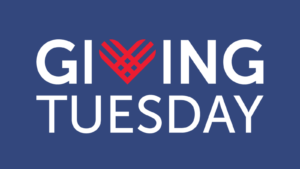Written by Genealogical Society research library volunteer, Beth Mitchell.
We often find a “movement” in a community that may have long-lasting effects. It appears the Commercial Club of Wilmington may have been one of those entities that shaped the business history of Clinton County. This endeavor was first discussed and then organized as a body in 1901 and had sixty charter members. There was no “fire-brand” to keep the club growing so it was just “existing” for several years. Nothing gets things going like a good controversy.
In 1910 Dr. George Wire was president. All the streets of Wilmington appear to have yet been dirt streets. In 1913 a levy was passed to have a contractor cover the dirt streets of Main, South, and Locust with bricks. The work was dutifully begun and in very short order created a problem for city hall. Some of the residents objected to the work necessary to prepare the streets to be covered with bricks. It encroached on some of their lawns and they promptly filed a lawsuit – halting the work. The Commercial Club was actively revived in 1914 and a group of merchants promoted a campaign to pave the streets with brick. The litigants settled and the project was begun again.
The first meetings of the newly revived club were held in the Masonic Temple building and in 1915 the meetings were moved to the Samuel Walker building. By 1914 one Matthew Romback Denver had returned to Wilmington and he was chosen president of the Commercial Club of Wilmington. The membership grew to one hundred forty-four members. Dues of $5.00 for the first year and $2.00 per year thereafter were approved. Rural residents who sold animals, fowl, and produce for their income were also encouraged to join. The election of M. R. Denver as their president seemed to be the “spark” that was needed.
We have a list of the 1914 members. M. R. Denver was president, G. P. Thorpe was vice-president, Frank A. Peelle was secretary, H. N. Henderson was assistant secretary, and Frank L. Gallop was treasurer. You may recognize the family names of some yet today: Farquhar, Williams, Murphy, Rannells, Doan, Buckley, Starbuck, Terrell, Hoskins, Champlin, Walker, Bailey, Hiatt, Linton and others.
Over the years there were many parades and in 1915 the Xenia Club organized one hundred sixty-nine cars from their club to be in the parade. The African-American community raised more than $200.00 to bring the Ninth Battalion Band of Columbus which was a very well-known African American band.
By 1920 the club began looking for a “home of its’ own”. The Club chose to purchase a house at the southeast corner of Walnut and Sugartree streets. At the time it was known as the “South House”. The Club developed the multi- story building that many of us will remember as the “Eagles building”. There were rooms for meetings, recreation, a club room, and the kitchen of the facility could produce meals for lavish parties for more than two hundred persons. The Club was active in promoting street lights and other utilities that we enjoy today. Alas, over the years the Club became less relevant and sold the building to the Eagles. The space is now occupied by CVS pharmacy and its’ parking lot. As we understand it the Commercial Club was the forerunner of the present Chamber of Commerce.


